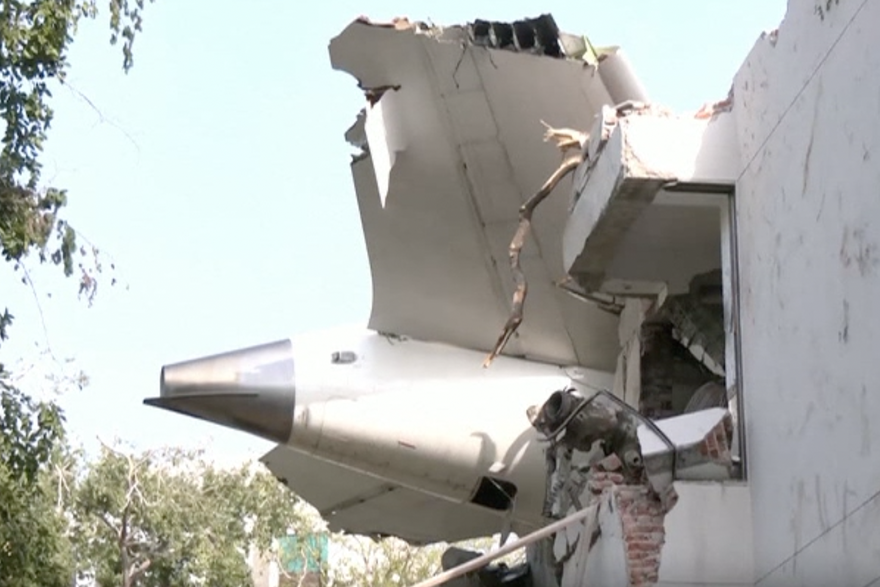A new natural disaster is lurking for buried Swiss mountain village of Blatten
:format(webp)/s3/static.nrc.nl/wp-content/uploads/2025/05/28200110/web-2805BUIblatten.jpg)
For the inhabitants of Swiss villages located in the valley of the Lötschental, the worries are not yet over. On Wednesday, one of the places, blats, disappeared under a stream of ice, mud and debris after a piece of glacier broke off. That caused a big avalanche.
The rubble that came down with the avalanche has blocked the Lonza River. A mountain of stones and rubble extends over a length of two kilometers along the river. The water accumulates, the risk of flooding increases rapidly. The authorities have declared the state of emergency.
The lake is becoming ‘increasingly bigger’, says a local official who is responsible for the management of natural disasters at the AFP news agency. Due to the rising water, sixteen inhabitants have already been evacuated on Wednesday from the two downstream places Kippel and Wiler.
The situation in the area is currently too unstable to enter the area, the authorities of the Canton Wallis announce Thursday. However, preventively an artificial dam has been broken open to control the water driven back by the blockade. If the water flows over the dam, the inhabitants of the entire valley will be evacuated.
The dreaded disaster scenario
On Wednesday, the Lötschental was confronted with the disaster scenario for which for thirty -five years has been feared. A large part of the Birch glacier broke off, causing more than 3.5 million cubic meters of ice, stone and snow to play in the village of Blatten. Thanks to a preventive evacuation, the three hundred inhabitants of the village had already been brought to safety. A 64-year-old man has been given up missing. The avalanche destroyed 90 percent of the houses.
Since the 1990s, the glacier has been closely monitored due to growing collapse. Due to climate change, glaciers in the Alps melt faster and faster, which can lead to the breaking of a part of the ice. The immediate reason for the disaster was probably a landslide of the nearby mountain of smaller Nesthorn. A week before the disaster, part of the eastern ridge of the nearly four thousand meter high mountain collapsed, and two to three million cubic meters of rock material ended up on the glacier. According to local media Settled this under the weight of the stones.
Glaciers
It is not the first time that such a disaster has occurred in Switzerland. In June 2023, millions of cubic meters of rock wall collapsed on the village of Brienz. The nocturnal avalanche missed the village on a hair and came to a halt near the local school. No residents were injured.
The common denominator of the two natural disasters in the Alps is according to experts global warming. Due to the change in temperature, the glaciers melt, the permafrost thaws in the mountains and the rocks in the mountain walls become unstable.
Glaciers are an excellent indicator of global warming, writes the BBC. In a stable climate they remain about the same size, in which they win approximately as much ice due to snowfall as they lose due to melting. Over the past twenty years, the glaciers have been growing en masse worldwide.
Mountain glaciers – frozen rivers of ice – have lost no less than 5 percent of their ice in the past twenty -five years. In the Alps, where most glaciers are located in Europe, 4 percent of the glaciers disappeared in 2023. The year before, the mountain glaciers also decreased by 6 percent.
Read also
The three hundred inhabitants of the Swiss mountain village of Blatten had already been evacuated as a precaution.

:format(webp)/s3/static.nrc.nl/wp-content/uploads/2025/05/30202505/data133024476-6122b7.jpg)
:format(webp)/s3/static.nrc.nl/wp-content/uploads/2025/06/11155543/web-1106BINasielministers.jpg)
/s3/static.nrc.nl/images/gn4/stripped/data133570559-b6452f.jpg|https://images.nrc.nl/cFO1q3_mV04e_lPnquPR0G7cvhM=/1920x/filters:no_upscale()/s3/static.nrc.nl/images/gn4/stripped/data133570559-b6452f.jpg|https://images.nrc.nl/vSFnr8_MzO9ab6A0yEThLueec08=/5760x/filters:no_upscale()/s3/static.nrc.nl/images/gn4/stripped/data133570559-b6452f.jpg)



